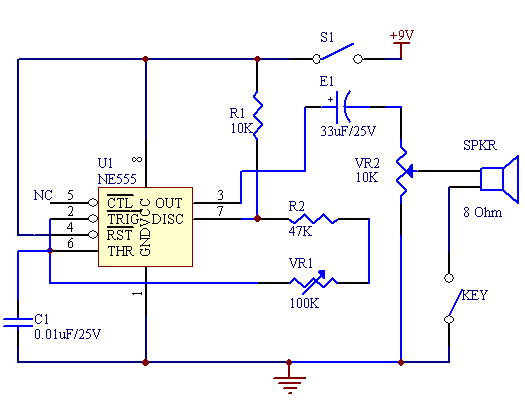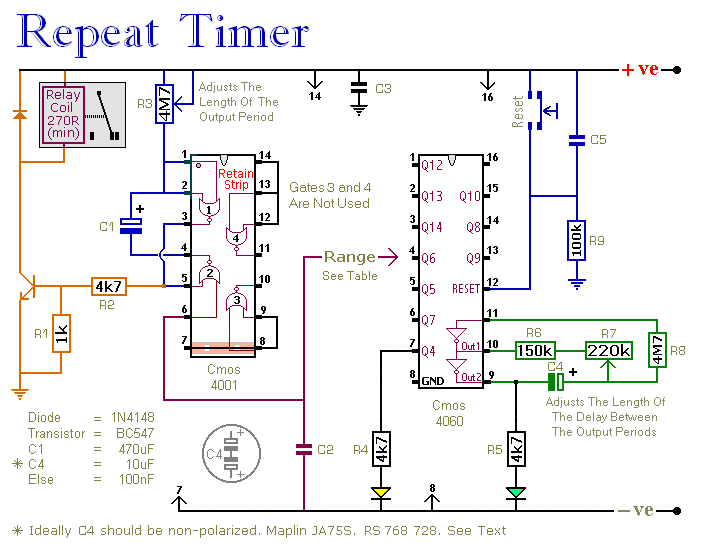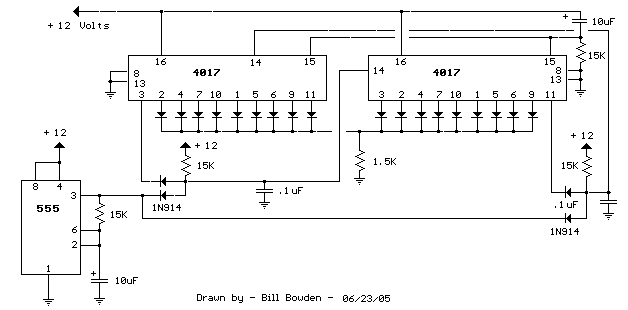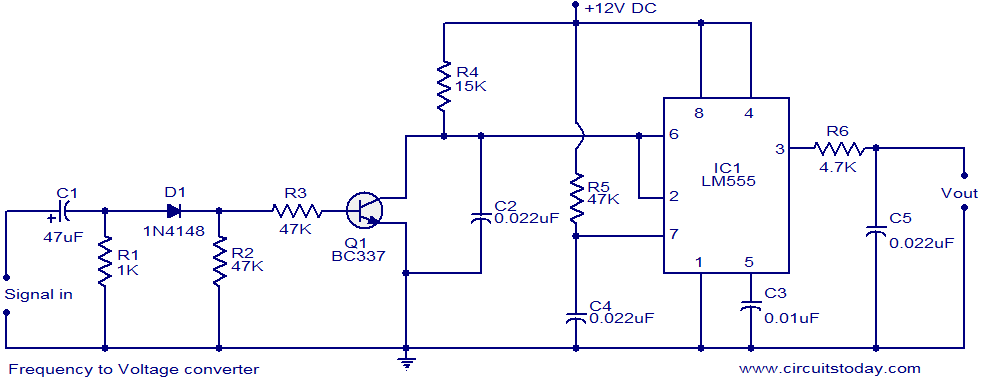
7555 IC For 5 To 30 Minute Timer
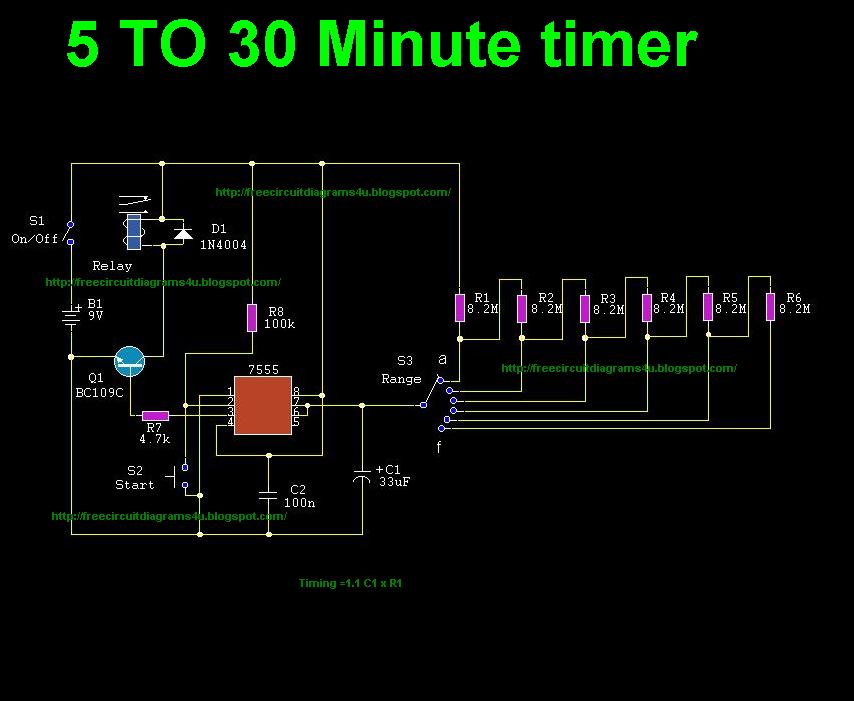
This circuit illustrates the use of the 7555 integrated circuit (IC) for a timer circuit that can be set to operate between 5 to 30 minutes. This circuit is beneficial as it allows for timed operations.
The 7555 timer IC is a versatile component that can be configured in various modes, including monostable and astable configurations. In the context of a timer circuit, it is typically used in a monostable mode where it generates a single output pulse of a specified duration in response to a triggering input.
To construct a 5 to 30-minute timer using the 7555 IC, the circuit will typically include the following components: the 7555 timer IC, resistors, capacitors, and a power supply. The timing duration is primarily determined by the resistor-capacitor (RC) network connected to the timing pins of the IC.
In this configuration, the timing capacitor (C) is charged through a resistor (R), and the time period (T) can be calculated using the formula T = 1.1 * R * C. By selecting appropriate values for R and C, the desired timing range can be achieved. For example, to achieve a 30-minute timer, a larger capacitor value or a higher resistance value may be necessary.
The output of the 7555 can be connected to various loads, such as LEDs, relays, or other devices that require timed activation. Additionally, the circuit may incorporate a manual reset switch to allow the user to reset the timer before the timing period elapses.
Overall, the 7555 timer circuit is a practical solution for applications requiring delayed activation, making it suitable for various electronic projects and automation tasks.Description:This circuit shows about 7555 IC For 5 To 30 Minute Timer Circuit Diagram. Features: useful circuit because by using this circuit you can operate .. 🔗 External reference
The 7555 timer IC is a versatile component that can be configured in various modes, including monostable and astable configurations. In the context of a timer circuit, it is typically used in a monostable mode where it generates a single output pulse of a specified duration in response to a triggering input.
To construct a 5 to 30-minute timer using the 7555 IC, the circuit will typically include the following components: the 7555 timer IC, resistors, capacitors, and a power supply. The timing duration is primarily determined by the resistor-capacitor (RC) network connected to the timing pins of the IC.
In this configuration, the timing capacitor (C) is charged through a resistor (R), and the time period (T) can be calculated using the formula T = 1.1 * R * C. By selecting appropriate values for R and C, the desired timing range can be achieved. For example, to achieve a 30-minute timer, a larger capacitor value or a higher resistance value may be necessary.
The output of the 7555 can be connected to various loads, such as LEDs, relays, or other devices that require timed activation. Additionally, the circuit may incorporate a manual reset switch to allow the user to reset the timer before the timing period elapses.
Overall, the 7555 timer circuit is a practical solution for applications requiring delayed activation, making it suitable for various electronic projects and automation tasks.Description:This circuit shows about 7555 IC For 5 To 30 Minute Timer Circuit Diagram. Features: useful circuit because by using this circuit you can operate .. 🔗 External reference
Warning: include(partials/cookie-banner.php): Failed to open stream: Permission denied in /var/www/html/nextgr/view-circuit.php on line 713
Warning: include(): Failed opening 'partials/cookie-banner.php' for inclusion (include_path='.:/usr/share/php') in /var/www/html/nextgr/view-circuit.php on line 713

